SAP Inventory Management
Filter By
Browse By
- SAP Analytics and AI
- SAP Application Development and Integration
- All SAP Application Development and Integration
- SAP ABAP
- SAP ABAP Development Tools
- SAP ABAP Test Cockpit
- SAP API Management
- SAP BAPI
- SAP Basis
- SAP BRF
- SAP Business Application Studio
- SAP CMS
- SAP Design Studio
- SAP Development Tools
- SAP DevOps
- SAP EAI
- SAP EDI
- SAP Extension Suite
- SAP Fiori
- SAP Fiori Elements
- SAP Integration Suite
- SAP Low Code Application Development
- SAP Low Code Automation
- SAP Netweaver
- SAP Release Management
- SAP UI5
- SAP Web Application Server
- SAP Web IDE
- SAP Business Process Management
- SAP Center of Excellence
- SAP CIO
- SAP Customer Experience
- SAP Data and Data Management
- All SAP Data and Data Management
- SAP BW
- SAP BW/4HANA
- SAP Crystal Reporting
- SAP Data Archiving
- SAP Data Center
- SAP Data Governance
- SAP Data Integration
- SAP Data Migration
- SAP Data Quality
- SAP Data Services
- SAP Data Strategy
- SAP Data Visualization
- SAP Data Warehouse Cloud
- SAP DMS
- SAP Document Control
- SAP EIM
- SAP ETL
- SAP ETL Tools
- SAP HANA
- SAP HANA Administration
- SAP HANA Deployment Infrastructure
- SAP HANA Studio
- SAP Master Data
- SAP Master Data Governance
- SAP MDM
- SAP Enterprise Architect
- SAP Enterprise Asset Management
- SAP ERP
- SAP Finance
- All SAP Finance
- SAP Accounting
- SAP AR AP
- SAP Asset Accounting
- SAP Billing Systems
- SAP BPC
- SAP BRIM
- SAP Cash Management
- SAP Central Finance
- SAP Controlling
- SAP COPA
- SAP Cost Center Accounting
- SAP e-invoicing
- SAP FICO
- SAP Finance Automation
- SAP Financial Closing Cockpit
- SAP Financial Consolidation
- SAP Financial Planning
- SAP FX Risk
- SAP General Ledger
- SAP Global Tax Management
- SAP Hyperion
- SAP Order to Cash
- SAP Payment Processing
- SAP Profitability Analysis
- SAP Rebate Management
- SAP S/4HANA Finance
- SAP Universal Journal
- SAP Governance Risk and Compliance
- SAP Human Capital Management
- SAP Intelligent Technologies
- SAP Platform and Technology
- All SAP Platform and Technology
- SAP Business Technology Platform
- SAP Cloud Connector
- SAP Cloud Integration Platform
- SAP Cloud Migration
- SAP Cloud Platform
- SAP Cloud Providers
- SAP Cloud Strategy
- SAP Container Platform
- SAP Digital Asset Management
- SAP Digital Integration Hub
- SAP Digital Signature
- SAP HANA Enterprise Cloud
- SAP HEC
- SAP Hyperscalers
- SAP Infrastructure
- SAP Messaging
- SAP Smart Forms
- SAP Quality and Testing
- SAP Security
- SAP Spend Management
- SAP Supply Chain Management
- All SAP Supply Chain Management
- SAP APO
- SAP Asset Management
- SAP Business Network
- SAP Digital Manufacturing Cloud
- SAP Digital Twin
- SAP EWM
- SAP IBP
- SAP Inventory Management
- SAP Label Printing
- SAP Logistics
- SAP Manufacturing
- SAP Manufacturing Automation
- SAP MES
- SAP MII
- SAP MM
- SAP MRO
- SAP MRP
- SAP Order Management
- SAP Plant Maintenance
- SAP PLM
- SAP Production Planning
- SAP S&OP
- SAP SD
- SAP SPM
- SAP Supply Chain Planning
- SAP Track and Trace
- SAP Transportation Management
- SAP System Administration
Supply Chain Management: SAP Inventory Management
Inventory is a fundamental part of your business. Without proper inventory management, the organization can suffer inefficiencies, profit decline, and sustainability impacts.
What is Inventory Management?
Inventory Management is the practice of controlling inventory flow for maximum organizational efficiency. It is suitable for businesses of any size and focuses on organizing and streamlining product storage and fulfillment. The management of stock can be done on a quantity or value basis. Inventory management in SAP is an important component of the Material Management (MM) module, it deals with stocks and goods movement.
With SAP, many companies have real-time data on inventories, which is vital for capacity management and expansion of complex supply chains. The application provides several management tools to help users create an organized warehousing space while uncovering valuable operational data. A couple of examples include the following.
Supply Chain Management: SAP Inventory Management
Inventory is a fundamental part of your business. Without proper inventory management, the organization can suffer inefficiencies, profit decline, and sustainability impacts.
What is Inventory Management?
Inventory Management is the practice of controlling inventory flow for maximum organizational efficiency. It is suitable for businesses of any size and focuses on organizing and streamlining product storage and fulfillment. The management of stock can be done on a quantity or value basis. Inventory management in SAP is an important component of the Material Management (MM) module, it deals with stocks and goods movement.
With SAP, many companies have real-time data on inventories, which is vital for capacity management and expansion of complex supply chains. The application provides several management tools to help users create an organized warehousing space while uncovering valuable operational data. A couple of examples include the following.
Physical locations or organizational levels:
- Plant: A high-level physical location to which the materials are assigned.
- Storage Location: A specific area within the plant where the material is stored.
Four primary movement of goods are:
- Goods Receipt: Inventory can be approved for immediate use or be checked in.
- Goods Issue: A company may choose to process inventories for production or to sell to customers.
- Return Delivery: When materials are being returned from a customer or vendor.
- Internal Movements: When inventory is transferred internally from one location to another.
Most importantly, proper inventory management allows you to move goods with as little wasted time and money as possible. It can help you to optimize demand fulfillment for e-commerce, which is quickly becoming the norm in business to business today.
Benefits of SAP inventory management are:
- Accuracy and timeliness
- Realistic production schedule
- Quality checking
- Inventory analysis
- Proper reporting.
Technical resource partners for consideration might be –Movilitas, Opsveda, SAP.
Further insights for SAPinsiders around SAP Inventory Management
- Real Time Inventory and Order Visibility: Key for Successful Supply Chain Management. Probodh Chiplunkar from Ithena Technologies, outlines how real-time inventory transparency within a technological landscape affects business operations.
- Pick and Choose: How Kingston General Hospital Manages its Inventory with SAP. Author Davin Wilfrid interviews Derrick Morey at Kingston General Hospital (KGH), about the complex network of systems and people managing all the tubes, bandages, needles, and other medical supplies distributed throughout KGH. As an early adopter of SAP ERP technology, the hospital adopted a centralized inventory management system to track supplies for better accuracy.
- Next-Generation Inventory Management. Tom Chason addresses questions about the SAP Enterprise Inventory and Service-Level Optimization and SmartOps solutions. See how an integrated approach offers a powerful way to meet all these requirements for modern supply chains.
1003 results
-

- SAP Enterprise Asset Management
 Premium
Premium
How Gold Fields Optimised Work Management using Fiori and Mobile Solutions
Gold Fields faced challenges in their work management processes, including inefficiencies in work order management, delays due to a lack of real-time data access, and communication breakdowns among maintenance teams. These issues reduced productivity, increased downtime, and raised operational costs, impacting overall efficiency and asset reliability. Mastering SAP Premium Access Membership Required You must be…
-

- SAP Enterprise Asset Management
 Premium
Premium
Maximising Safety, Sustainability, and Performance: An Asset Management Leader’s Vision for Transformative EAM Systems
In today’s complex mining environment, Enterprise Asset Management (EAM) systems are essential for aligning asset management strategies with safety, operational, financial, and sustainability goals.However, the most effective EAM systems support and enhance existing workflows, enabling asset management leaders to achieve optimal results without disrupting frontline teams. This presentation will emphasise that EAM must act as…
-

Finding the Right Solution for Asset-heavy Industries
Published: 18/September/2024
Reading time: 2 mins
Enterprise asset management (EAM) lives and thrives on foolproof planning and scheduling. That’s a given – but today, we live in a world where there aren’t many givens regarding outside forces affecting supply chains and operations. This is especially true for asset-heavy industries such as energy and infrastructure. Underinvesting in planning and scheduling can lead…
-
-

Application Management Services success, from Australia to Japan
Published: 13/November/2024
Reading time: 2 mins
FPT Software, a Vietnam-based IT services provider, offers Global 24×7 Application Management Services that enhance SAP system maintenance and support globally, backed by positive testimonials from clients like Rheem Australia and Ajinomoto for its efficient service delivery, even amid COVID-19 challenges.
-

Improve Supply Chain
Published: 15/April/2008
Reading time: 7 mins
Gain a critical overview of how vendor-managed inventory (VMI) reduces inventory levels and holding costs, enhances supplier visibility, and shrinks demand fluctuations. Learn how to set up master data and configure your SAP system to support VMI. Key Concept In a traditional retailer-vendor relationship, the retailer stores the inventory and maintains inventory levels, ordering more...…
-

- SAP Blockchain
 Premium
Premium
Web3.0 and Inventory Management
Published: 02/August/2021
Reading time: 6 mins
While Web3.0 may take time to mature enough to replace Web2.0 if an end-to-end supply chain can develop an internal network based on the underlying principles of Web3.0 defined above, it can address the following challenges of inventory management (illustrative examples, not exhaustive): Information transparency: The decentralization of information between entities will help build trust…
-

- SAP General Ledger
 Premium
Premium
Working With SAP Material Ledger and SAP Group Reporting in HANA 2022
Published: 08/September/2023
Reading time: 15 mins
Intercompany transactions require significant attention and have always been a critical part of the financial analysis world in SAP. Certainly, this process is very complex, and it will require significant resources with different levels of expertise as operational reporting and business requirements become more detailed. In this article, SAPinsider expert Dr. March Sisfontes-Monge will highlight…
-
-

- SAP Inventory Management
 Premium
Premium
AIoT for Inventory Management and Planning
Published: 15/July/2022
Reading time: 3 mins
There is no doubt that the AI-enabled Internet of Things (IoT) has the capability to transform the way supply chains run significantly. This is why we will cover this aspect, among others, in our November research report, Inventory Planning and Optimization State of The Market. While we predominantly think of the usage of AIoT in…
-

Prospecta Software Commits to Solving for Data Quality and Governance with its MDO Offering
Published: 25/November/2024
Reading time: 4 mins
The rise of enterprise master data management is driving demand for enhanced data quality solutions, exemplified by Prospecta Software’s Master Data Online (MDO), which integrates data remediation and governance capabilities crucial for accurate and efficient digital transformations, including SAP migrations.
-

Capture the Value of Stock in Transit Using a New Business Function in Enhancement Package 5
Published: 07/December/2011
Reading time: 15 mins
The classic sales process is a three-step procedure: create a sales order, create a delivery with reference to the sales order, and invoice for the delivered goods. Handling the potential time gap between the goods issue and the invoice has long been an issue for organizations trying to keep their financial accounts and Profitability Analysis...…
Featured Experts
-

Sparsh J Varsani
SAP Consultant
Become a Member
Unlimited access to thousands of resources for SAP-specific expertise that can only be found here.
Upcoming Events
Related Vendors
Your request has been successfully sent


